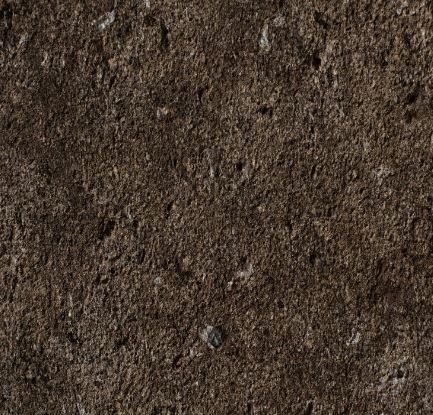What is Screened Topsoil?
Screened topsoil is topsoil that has been sifted through a fine mesh screen to remove large particles such as rocks, sticks, roots, and other debris. This process ensures that the soil is clean, consistent, and ready for immediate use in gardening, landscaping, and other projects.
The screening process can vary depending on the size of the mesh used, resulting in different textures of screened topsoil, from fine, powdery soil to slightly coarser mixtures. The goal is to provide a smooth, even soil texture that is easy to work with and ideal for planting.
Benefits of Screened Topsoil
- Improved Soil Quality
The screening process removes unwanted materials like rocks, sticks, and weeds, leaving behind a fine, clean soil that is more uniform and ideal for planting. This makes it easier to work with, reduces the risk of plant root damage, and promotes better seed germination. - Better Drainage
Screened topsoil typically has improved aeration and drainage compared to un-screened soil. The fine particles allow water to move through the soil more efficiently, helping to prevent waterlogging and root rot in plants. - Prevents Weeds
By removing weeds, roots, and debris during screening, this type of topsoil reduces the chances of new weeds growing in your garden. This can save you time and effort in maintaining a weed-free landscape. - Easier to Work With
The smooth texture of screened topsoil makes it easier to spread, level, and work with. Whether you are filling raised beds, creating a new lawn, or improving your garden, screened topsoil is much more manageable than unscreened soil. - Promotes Healthy Plant Growth
Screened topsoil is rich in nutrients and organic matter, which can improve soil fertility and provide a better environment for plant roots. With a balanced mixture of sand, silt, and clay, it allows plants to establish strong root systems.
How to Choose the Right Screened Topsoil for Your Project
- Soil Composition
Different projects may require different soil types. Screened topsoil can be made from a variety of soil sources, such as loamy soil, sandy soil, or clay-rich soil. Consider the needs of your plants and the local climate when choosing your screened topsoil. For most garden beds and lawns, loamy or sandy screened topsoil is preferred due to its balance of moisture retention and drainage. - Look for Organic Content
Organic matter such as compost or decomposed plant material is essential for healthy soil. Organic-rich screened topsoil can help improve soil structure, fertility, and water retention. Always check for the inclusion of organic matter when purchasing screened topsoil. - Consistency
The quality of screened topsoil can vary depending on the supplier. Make sure the soil is consistent in texture and free from large clumps, rocks, and other debris. High-quality screened topsoil should have a fine texture that is easy to work with and spread evenly. - Avoid Contaminants
Make sure that the screened topsoil you buy is free of contaminants, such as chemicals, pesticides, or construction debris. Contaminants can harm your plants, soil health, and the environment. A reputable supplier will provide clean, tested soil. - Test the pH Level
Different plants thrive in different pH levels of soil. Test the pH of your screened topsoil to ensure it is suitable for the plants you want to grow. Most plants prefer a pH range between 6 and 7 (slightly acidic to neutral), but specific plants may require more acidic or alkaline conditions.
Common Uses for Screened Topsoil
- Lawn Establishment and Repair
Screened topsoil is ideal for establishing new lawns or repairing existing ones. Its fine texture allows for easy spreading and improves the chances of successful seed germination. It’s especially useful for creating a level surface and ensuring consistent soil depth. - Garden Beds
Whether you’re creating new garden beds or amending existing ones, screened topsoil provides a clean, fertile base for growing vegetables, flowers, and shrubs. It’s free from weeds and debris, so your plants can thrive without competition from unwanted growth. - Raised Garden Beds
Screened topsoil is perfect for filling raised beds, providing a high-quality growing medium that encourages root development and water retention. It’s often combined with compost or other organic matter to create a rich, well-draining soil mix. - Landscaping Projects
Screened topsoil is often used to level areas of land or create mounds and berms. It can be used in various landscaping applications such as creating flower beds, contouring land for drainage, or filling in low spots. - Erosion Control
Because of its fine, well-structured texture, screened topsoil is an effective solution for preventing soil erosion. It can be used to stabilize slopes and fill in areas prone to erosion, helping to maintain the integrity of the landscape.
How Much Screened Topsoil Do You Need?
To determine how much screened topsoil you need for your project, you can use the same calculation method as for bulk topsoil. Here’s a simple way to calculate the volume:
- Measure the area: Calculate the length and width of the area to be covered.
- Decide the depth: For garden beds or lawns, a depth of 2 to 6 inches is typical, depending on the project.
- Use a calculator: Multiply the length by the width and then multiply by the depth (in feet). Convert the result into cubic yards by dividing by 27 (since there are 27 cubic feet in a cubic yard).
For example, for a garden bed measuring 12 feet by 15 feet and requiring 3 inches of screened topsoil:
- 12 ft x 15 ft = 180 sq ft
- 3 inches = 0.25 feet
- 180 sq ft x 0.25 ft = 45 cubic feet
- 45 cubic feet ÷ 27 = 1.67 cubic yards
So, you would need approximately 2 cubic yards of screened topsoil for this project.
Tips for Using Screened Topsoil
- Prepare the Soil Properly
Before applying screened topsoil, remove any weeds, old plant material, or debris from the area. Loosen the underlying soil to help the new soil blend in and establish a better root environment. - Level the Soil
After spreading the screened topsoil, use a rake or shovel to level it out. This ensures an even surface and reduces the risk of uneven settling as the soil compacts over time. - Amend If Necessary
In some cases, you may need to amend screened topsoil with additional organic matter, such as compost or peat moss, to increase fertility and improve moisture retention. - Water the Area
Once you’ve applied the screened topsoil, water it thoroughly. This helps to settle the soil and ensures it is moist enough for planting. - Avoid Walking on the Soil
Avoid walking on the freshly laid screened topsoil as this can lead to compaction, which could hinder drainage and root growth.
Conclusion
Screened Topsoil is an excellent choice for a variety of landscaping and gardening applications. Its clean, fine texture makes it easier to work with, promotes healthy plant growth, and helps create a strong foundation for any project. By understanding the benefits, uses, and how to select the best screened topsoil for your needs, you can ensure that your landscaping projects succeed and your plants thrive.
Whether you’re establishing a new lawn, creating garden beds, or filling raised planters, screened topsoil provides the high-quality, nutrient-rich base you need for successful gardening and landscaping.



